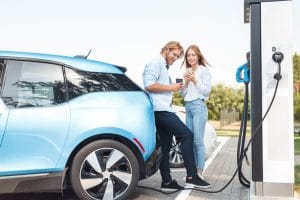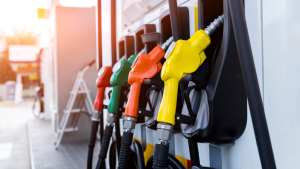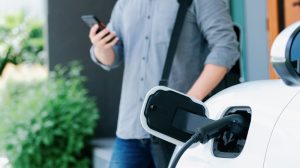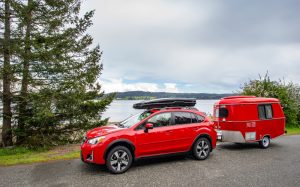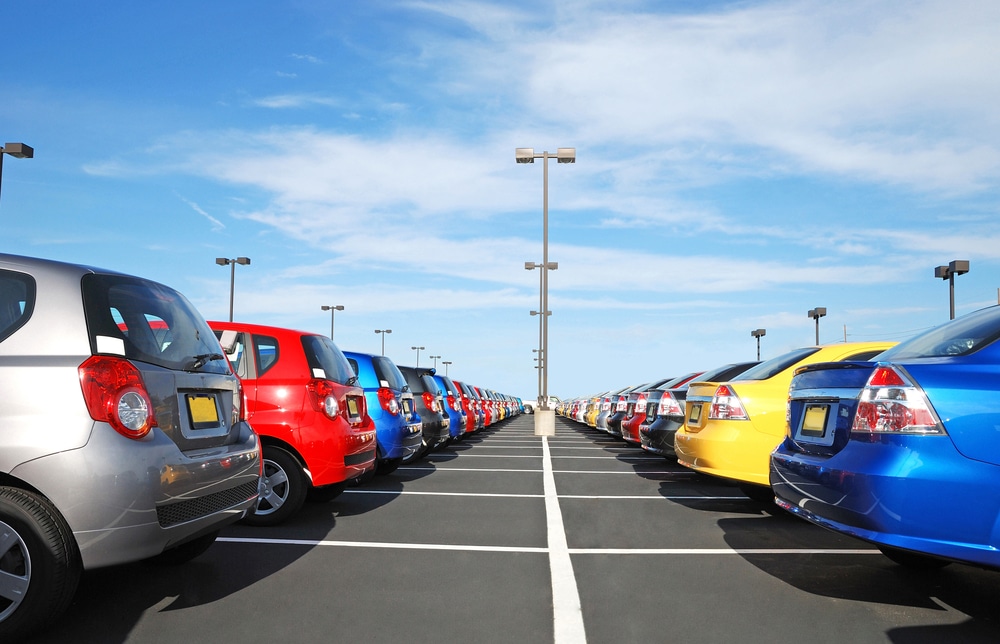
- The Savvy Promise
At Savvy, our mission is to empower you to make informed financial choices. While we maintain stringent editorial standards, this article may include mentions of products offered by our partners. Here’s how we generate income.
In this article
There are almost as many cars as there are people in Australia. According to the Australian Bureau of Statistics, there are 20.1 million registered motor vehicles – that’s almost one per person of driving age. Over 2020, the national fleet grew by 1.7%. It would seem our appetite for new cars remains steady, despite lockdowns, the COVID-19 pandemic, and other economic factors.
2020 saw one of the biggest slumps in new car sales since the Global Financial Crisis of 2007-2008. International new car sales slowed from 91.3 million in 2019 to 63.7 million in 2020, according to Statista. Over 2019-2022 (predicted) this represents a 13.8% slump.
Add this to a global semiconductor shortage, which has affected the supply of almost everything reliant on electronics: smartphones, games consoles, and of course, modern vehicles.
However, Australia is a big outlier.
Sales of vehicles are up 33% compared to the same time last year (81,999 vs 60,986), according to the Federal Chamber of Automotive Industries. This means passenger vehicles, light commercial, heavy commercial, and SUVs are all trending upward. This is despite some parts of Australia being physically unable to purchase cars at dealerships due to prolonged lockdowns.
So, what does that mean for the future?
Where are new car sales headed in Australia? What are people buying? What are the top selling brands? Are people going electric or hybrid in the wake of rising petrol prices? What do dealers think? Let’s take a dive:

New Car Sales In Australia – Bucking The Trend
According to the FCAI, the Passenger Vehicle Market is up by 2,581 sales (17.5%) over the same month last year; the Sports Utility Market is up by 8,603 sales (26.6%); the Light Commercial Market is up by 8,002 sales (71.2%); and the Heavy Commercial Vehicle Market is up by 1,027 sales (39.3%) versus August 2020.
Total automotive sales in the United States plummeted by 15.83% in 2020, according to data from the US Bureau of Economic Analysis through the site Good Car Bad Car. Compared to August 2020, car sales have decreased by 47.7% (1,298,489 vs 619,806) which appears to have “fallen off a cliff” compared with Australian sales. This is despite 6.6% Q2 2021 GDP growth in the US – not an all-encompassing indicator, but one that is a far cry from a great recession.
SUV – The New Family Sedan?
SUVs have been the consistent performer Australia wide, outselling passenger vehicles by 4:1 in most months throughout 2021. SUV sales are up by 26.6% as mentioned before – in August, 40,981 new SUVs were sold; compared to 17,339 passenger vehicles and 19,236 light commercial vehicles. This correlates with 2020’s results that showed SUVs sales comprise almost half of all new car sales (49.6%) with passenger car sales only taking a quarter (24.22%).
The popularity of “Medium SUVs” that have a smaller profile, yet spacious interior may explain this trend; but the fact is that Australians are abandoning the “traditional” passenger segment for the SUV.
In the passenger car market, small (over $40,000) and light (under $25,000) cars were the highest sellers (13.3% combined.) Medium cars sold a combined total 2.9%, while the next largest segment was under $40,000 small cars at 1.2%. The entry level sports market (under $200,000) accounted for 1% of sales, while large cars comprised 0.6%.
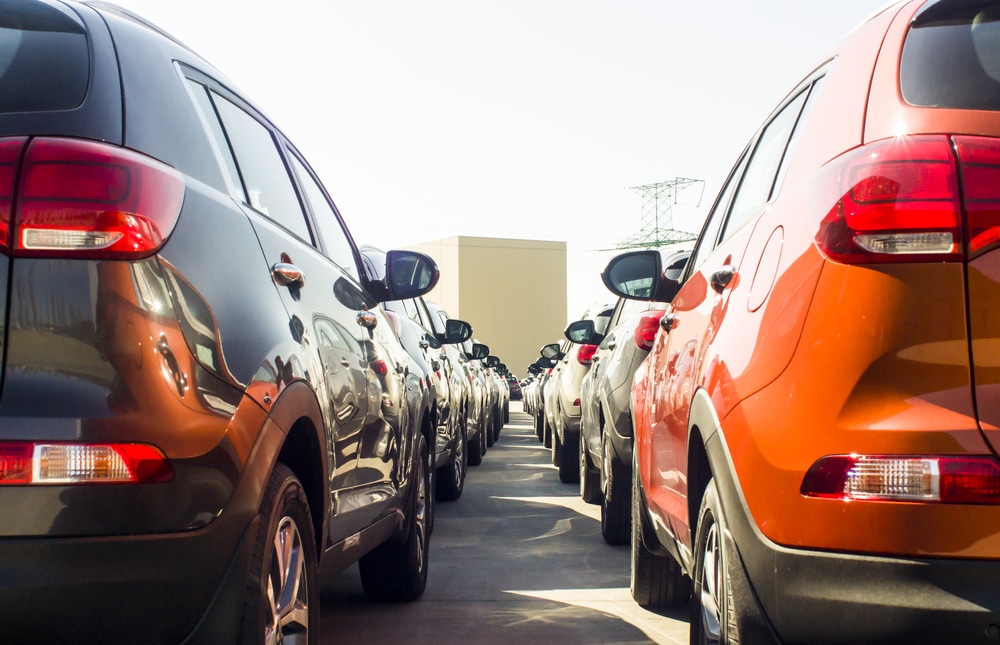
SUVs have been outselling passenger vehicles by 4:1 in most months throughout 2021.
The Popular Marques Remain, Well, Popular
The top car brand is Toyota, which sold 21,076 vehicles in June 2021 is still far and away the most popular car brand in Australia. According to the ABS, there were three million registrations of Toyota branded vehicles in Australia last year.
Mazda came in at 2nd with 12,225 sales in June, up 29.8% year-on-year. Ford came in third with 8,456 sales. Other major shifts occurred in Mitsubishi, down 24% y-o-y, MG which shot up by 219.9%, and Isuzu, the truck and commercial manufacturer, up 49.2%.
As for year to date, Toyota remains the clear leader, selling 118,953 cars. This is followed by Mazda (60,466), Hyundai (38,634), and Kia (37,894.) Only three western marques are in the top 10 (Ford, Volkswagen, and MG) with Izuzu’s Ute division settling in at 11th (18,805).
Toyota, Mazda, and Hyundai have strong entries in all brand segments such as passenger vehicles, light commercial, and of course, SUVs.
Unsurprisingly, the runaway success in the medium car market in June 2021 was the ever-reliable Toyota Camry (1,026 sales). In the small segment, the Kia Cerato sold 2,711 units, followed by the Hyundai i30 (2,331), and Toyota Corolla (2,175.) Among medium SUVs, the Mazda CX-5 was the strong performer (3,018), followed by the Toyota RAV4 (2,501), and Hyundai Tuscon (1,496).
The top three selling models for the 2021 year to date is the Toyota Hilux (28,076), the Ford Ranger (25,336) and the Toyota RAV4 (20,359.)
Where The Sales Are
As for sales, the highest percentage change in vehicle registrations was in states that have been relatively lockdown-free in 2020 and 2021 – Queensland, South Australia, and up until recently, the ACT. Victoria showed the smallest percentage gain at only 0.7%.
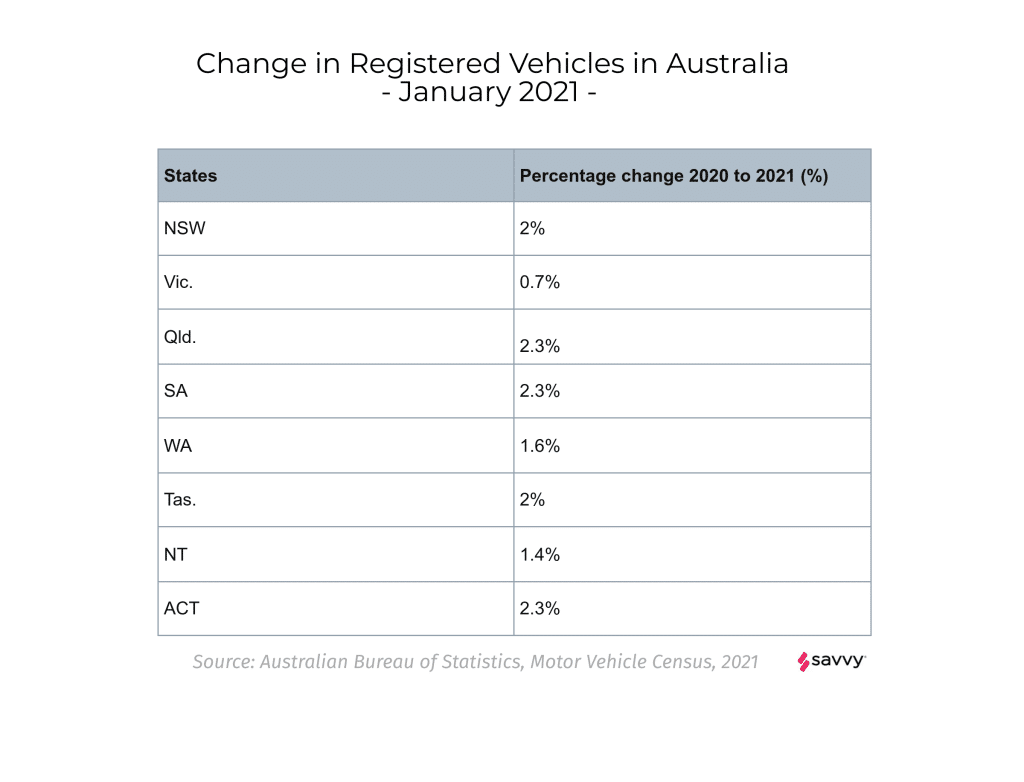
Hybrids and Electric Sales
Hybrids and Electric sales are growing year on year, with the year-to-date sales already surpassing the sales in 2020 with 8,688 Plug-In Hybrid Vehicles (that run on fuel to charge a battery) and solely electric vehicles, called Battery Electric Vehicles. According to the Electric Vehicle Council, this represents 1.57% of all light vehicles sold in Australia.
In 2020, 0.78% of all vehicles sold in Australia were electric, compared with 10.7% in the United Kingdom, and 74% in Norway.
Australia will also be seeing new electric motorcycles and scooters come online, along with electric busses, and commercial electric vehicles.
Cars aren’t worth buying if they aren’t supported by infrastructure: over 3,000 public chargers are now available in Australia at over 1,650 locations. 470 of these are DC fast or ultra-fast chargers.
What Dealers Say – An Analysis
Anecdotally, according to dealers, the numbers of car loan applications have been strong, though the wait time on vehicles such as ex fleet cars has blown out to months. The same goes for new cars. Some buyers are paying a deposit and having to wait for 3 to 7 months.
This may also show in the statistics: according to the ABS, the average age of a roadworthy, registered vehicle is 10.6 years, an increase over last year. The youngest fleet is found in the ACT (9.5 years) and the oldest in Tasmania (13.3 years.) As ACT being the seat of Federal Government, it makes sense that departments and ministries would be updating their cars more often, compared with the general population.
According to automotive expert and founder at Carloop Riz Akhtar, Australians are still keen to buy cars despite up to twelve month waits. “COVID is still playing a big role in the U.S. compared to what's happening out here,” he says. “Apart from the recent lockdown in New South Wales and Victoria, the rest of the country is still doing pretty well. Manufacturers were not anticipating this sort of a surge in demand. That’s on the back of various factors, such as the stimulus packages that have been handed out to job seekers.”
“Dealers don’t have any trouble selling cars. There are just too many people that want them at the moment.”
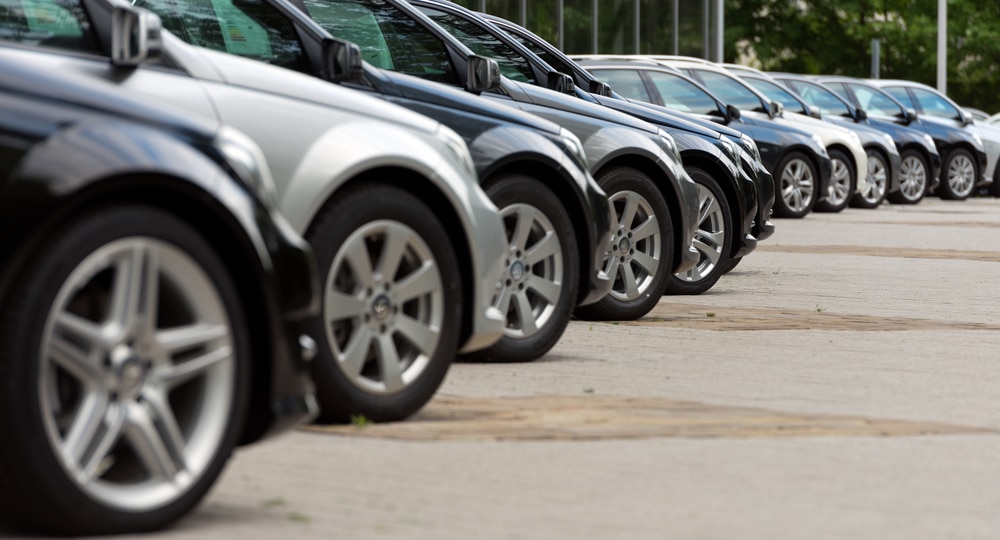
Buyers' preference for SUVs over Sedans continues to grow
Why the surge in SUV sales?
Riz from Carloop puts it simply: “It’s all about the marketing manufacturers have put behind it. SUVs are cheaper to produce. They’re basically building a box and embedding whatever they want in it. The margins are way better than sedans or other types of larger vehicles.
“From a marketing point of view, people have gotten the message that they are the cars that they want, and they've turned these SUVs into more of an aspirational purchase, as well as a lifestyle purchase. And that's caused quite a huge shift from sedans over to SUVs now, which I don't think will turn back anytime soon.”
Electric Cars – Tyrannised by Distance?
The tyranny of distance is possibly holding back electric cars in Australia. Buyers of EVs either have to shell out big bucks to go the distance or be bound to making well-planned trips that ensure charging stops across vast distances. Only one car can hope of doing the Melbourne to Sydney run (about 880km) without stopping, and that’s the Tesla Roadster. It comes in at a cool $326,000. The Mitsubishi i-MiEV might just make it to Seymour; the Hyundai IONIQ EV, BMW i3S, and Nissan Leaf possibly to Wangaratta. The Hyundai Kona or Kia Niro EV could make it to the NSW border; and only lower-priced Tesla models could greet the Dog on the Tucker Box at Gundagai.
However, looking at petrol prices, the average price per litre has jumped from $1.12 in October 2020 to $1.53 in August 2021, according to Trading Economics. The average electricity price per kilowatt hour (kWh) in Australia (counting VIC, QLD, NSW, and SA) is 24.65c.
If we compare the Nissan Pulsar to the Nissan Leaf electric vehicle – which comes out on top?
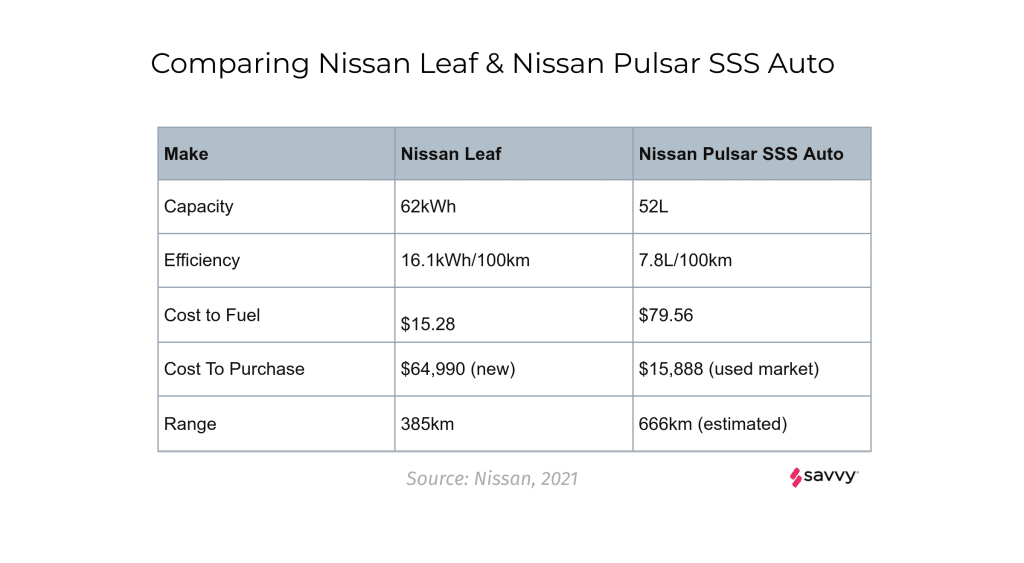
Though the Nissan Pulsar 2018 is cheaper to buy, the Nissan Leaf is cheaper to run, even if you have to charge it twice to the Pulsar’s single fill-up.
Riz says that electric car sales may be higher than being reported, as Tesla doesn’t report its sales figures to the FCAI. “They are a tech company, not an automotive company,” he says. “The majority of the electric car sales might be four or five times more than what's reported monthly in the vehicle statistics.”
However, prices are still high and a perception that electric vehicles won’t “go the distance” has taken hold in Australia.
“There is definitely a ‘range anxiety’, and that’s based on myths mostly. The charging infrastructure is ramping up and affordability will only get better. There are electric SUVs you can buy for under $45,000 now.”
The Theme of 2021 – Hurry Up And Wait
Like much of 2020 and 2021, the car industry, like our lives in general, is facing a “hurry up and wait” situation. Car sales are going well; if you’re prepared to wait for new stock or take up what’s on offer.
Jumping on to electric may not be the best bet, even though back of the envelope calculations show EVs will eventually pay for themselves in decreased running costs – even if you have to wait for your car to charge instead of the five or so minutes you can fully fuel up a car. What happens to spent batteries remains to be seen, however.
If you’re in the market for a car and need a great deal on car finance, contact Savvy.
Australian Bureau of Statistics, August 2021, Motor Vehicle Census, Australia, Jan 2021
Statista, 2021, Worldwide Motor Vehicle Sales Growth
Techxplore, August 2021, The Chips are Down: Why There's a Semiconductor Shortage
FCAI, September 2021, Market Growth Underlies Industry Strength
Good Car Bad Car, 2021, Overall U.S. Auto Industry Sales Figures
Drive, July 2021, VFACTS June 2021: New-car sales results show utes fill top three spots for second time in history
Electric Vehicle Council, August 2021, State of Electric Vehicles 2021
Canstar Blue, January 2020, Electric Cars with the Best Range
Trading Economics, 2021, Australian Gasoline Prices
Did you find this page helpful?
Author
Adrian EdlingtonGuest Contributor
Bill TsouvalasPublished on September 23rd, 2021
Last updated on April 2nd, 2024
Fact checked
This guide provides general information and does not consider your individual needs, finances or objectives. We do not make any recommendation or suggestion about which product is best for you based on your specific situation and we do not compare all companies in the market, or all products offered by all companies. It’s always important to consider whether professional financial, legal or taxation advice is appropriate for you before choosing or purchasing a financial product.
The content on our website is produced by experts in the field of finance and reviewed as part of our editorial guidelines. We endeavour to keep all information across our site updated with accurate information.




